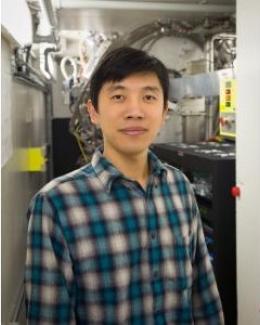Abstract
The water gas shift (WGS) reaction is of paramount importance for the chemical industry, as it constitutes, coupled with methane reforming, the main industrial route to produce hydrogen. Copper–chromium–iron oxide-based catalysts have been widely used for the high-temperature WGS reaction industrially. The WGS reaction mechanism by the CuCrFeOx catalyst has been debated for years, mainly between a “redox” mechanism involving the participation of atomic oxygen from the catalyst and an “associative” mechanism proceeding via a surface formate-like intermediate. In the present work, advanced in situ characterization techniques (infrared spectroscopy, temperature-programmed surface reaction (TPSR), near-ambient pressure XPS (NAP-XPS), and inelastic neutron scattering (INS)) were applied to determine the nature of the catalyst surface and identify surface intermediate species under WGS reaction conditions. The surface of the CuCrFeOx catalyst is found to be dynamic and becomes partially reduced under WGS reaction conditions, forming metallic Cu nanoparticles on Fe3O4. Neither in situ IR not INS spectroscopy detect the presence of surface formate species during WGS. TPSR experiments demonstrate that the evolution of CO2 and H2 from the CO/H2O reactants follows different kinetics than the evolution of CO2 and H2 from HCOOH decomposition (molecule mimicking the associative mechanism). Steady-state isotopic transient kinetic analysis (SSITKA) (CO + H216O → CO + H218O) exhibited significant 16O/18O scrambling, characteristic of a redox mechanism. Computed activation energies for elementary steps for the redox and associative mechanism by density functional theory (DFT) simulations indicate that the redox mechanism is favored over the associative mechanism. The combined spectroscopic, computational, and kinetic evidence in the present study finally resolves the WGS reaction mechanism on the industrial-type high-temperature CuCrFeOx catalyst that is shown to proceed via the redox mechanism.






